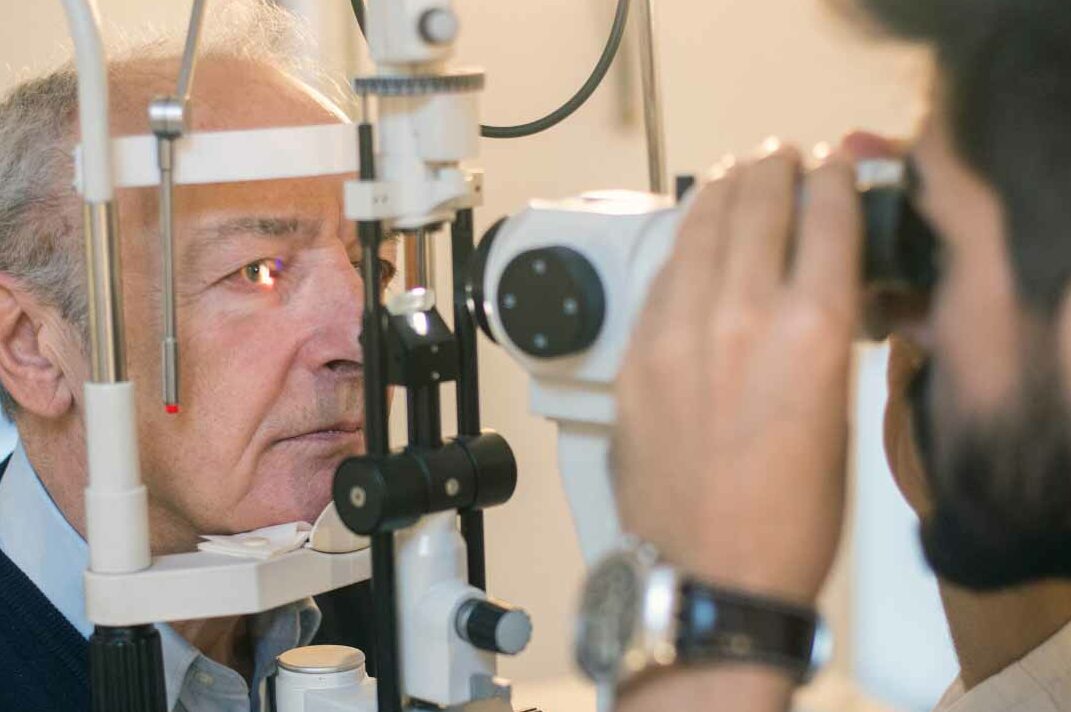May is National Healthy Vision month which is a good reminder of how important it is to monitor changes in your vision and eye health, especially as you age. As we get older, both near and far sight is likely to decline and you become more susceptible to disease that can impact vision. Some eye conditions, if left untreated or undetected early can cause vision loss and even blindness. Read on for 6 steps to help protect your vision health:
Get regular comprehensive dilated eye exams
One of the most important steps you can take to properly manage your vision health is to schedule regular eye exams. When you do, the doctor check for any changes in vision and for signs of any eye-related diseases. It is best to visit your eye doctor (an optometrist or ophthalmologist) annually or at least every two years. During a regular exam, the doctor will run a variety of tests checking for health issues such as glaucoma, cataracts or diabetic retinopathy. The doctor will put drops in your eyes to dilate the pupils, which enables them to do a more thorough examination and detect any signs of disease or degeneration. They will also check your medical history to determine if you are at higher risk for disease. Diabetes, high blood pressure, poor nutrition and other factors can impact eye health.
Eat right to protect your sight
A healthy diet is key to healthy aging. Good food choices not only help to prevent obesity and other related diseases, but also to care for your eyes. Foods that specifically promote vision health are dark leafy greens such as spinach and kale and fish that are high in omega-3’s such as tuna, trout, salmon, and halibut. Omega-3 fatty acids also help lower blood pressure, which supports better overall health.
Know your family’s eye health history
Go through your family’s medical history and check if anyone has been diagnosed with an eye disease or condition. Some eye conditions can be hereditary and put you at higher risk. Sharing this information with your physicians can help ensure you are receiving proper preventative care.
Grab the protective eyewear
When engaging in physical activity or doing yard work, gardening, home repairs or painting, consider protective eyewear. Wearing goggles or safety glasses will decrease the risk of injury during sports or from harmful debris or chemicals getting in or near your eyes when doing household projects or hobbies like carpentry.
Stop smoking
While we are well aware of the negative impact smoking can have on health, smoking can also be damaging to your vision. The New York Department of Health states, “Studies show smoking increases the risk of age-related macular degeneration, cataracts, glaucoma and diabetic retinopathy and Dry Eye Syndrome.”
Wear sunglasses
Sunglasses protect your eyes by acting as a barrier that reflects UV rays. Think of sunglasses as sunscreen for your eyes. Experts recommend that your shades protect your eyes from at least 99% of UV rays.
Studies show that people with vision problems are more at risk for heart issues, high blood pressure, lower back pain, increased risk of falls and depression. Caring for your vision health also benefits your overall health.
In honor of National Healthy Vision Month we encourage everyone use it as a reminder to schedule regular health screenings including an eye exam.
Visit adobepophealth.com to learn more about Adobe Health & Wellness, its case management services and healthcare technology innovations. We are dedicated to helping individuals live a healthier, more active quality of life.

